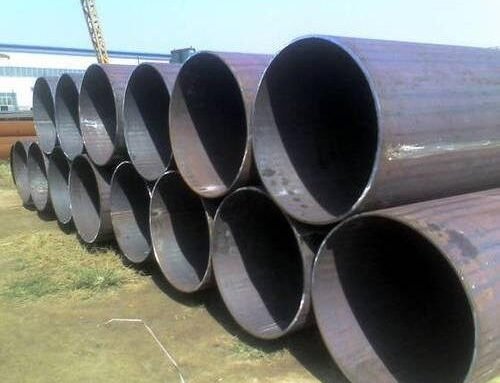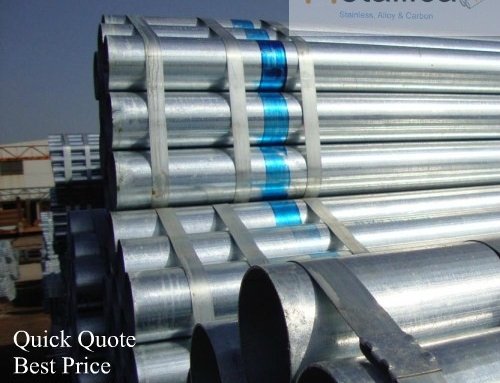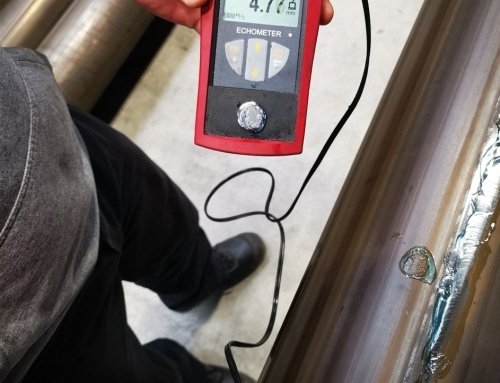What is a Pipe?
The pipe is a straight pressure tight cylindrical hollow, used in the piping system to transport liquid, gas and sometimes solids.
Different types of pipes are used in different design conditions, considering technical and commercial parameters. Click Here to know about History of Pipes.
Most metallic pipes are stronger and harder to break. They are more conductive to heat and electricity and less corrosive-resistant than nonmetallic pipes. Types of steel pipes (depending upon materials and manufacturing process) used in the petrochemical industry:-
- Seamless:- A seamless pipe is manufactured by drawing a solid steel billet through a piercing rod. For small & medium sizes requirement, seamless pipes are more popular whereas for larger diameter, welded pipes are more economical. Click Here to learn more about Manufacturing Process of Seamless Pipes.
- ERW (electric resistance welding):- Welded pipes are produced by cutting, bending, welding coils (ERW) or steel plates (LSAW).
- LSAW (longitudinal submerged arc welding):- Click Here to learn more about Manufacturing Process of Welded Pipes.
- Corrugated Steel Pipe:- Thin-wall, large diameter pipes made of galvanized steel sheets having either helical or annular corrugations.
- Cast-Iron Pipe:- Two types: the ordinary or gray cast-iron pipe, and the ductile-iron pipe.
- Ductile-Iron Pipe:- Made of iron containing approximately 3.5% of carbon in spheroidal or nodular form, and a magnesium alloy.
- Stainless Steel Pipe:- Steel contains chrome-nickel alloys, and corrosion resistant. 300 series such as SS304 or SS316, the most used stainless steel pipes.
- Carbon Steel Pipe:- Carbon steel is steel with carbon content up to 2.1% by weight.
- Alloy Steel Pipe:- Steel, combined with any number of other materials, produces improved alloys. For example, when paired with carbon, molybdenum, or nickel, steel becomes stronger and more resistant to corrosion.
- Aluminium Pipe:- It is corrosion resistant.
- Copper Pipe:- Copper and copper alloys are for special usage within oil and gas operations. These materials are often used for valves and seals. This is due to properties like electrical and thermal conductivity that help to transfer heat and cold without warping, cracking, or failing otherwise.
Learn More About Difference Between Seamless and Welded Pipe
Click Here to Know the Difference Between Piping and Pipeline
Code for Oil and Gas Pipeline
- ASME B31.4 – Pipeline transportation Systems for liquid hydrocarbons and other liquids
- ASME B31.8 – Gas Transmission and distribution piping systems
- ISO – 13623 – Petroleum and Natural gas industries Pipeline transportation systems
- DNV –F-101 – Offshore Standard for submarine pipeline systems
Materials:
- API 5L – Specification for line pipe
- API 5LC – Specification for CRA line pipe
- API 5LD – Specification for CRA Clad or Lined pipe
- API 5LE – Specification for Polyethylene line pipe
- ISO 3183 – Petroleum & Natural gas industries – Steel Pipe
- ISO 14692 – Petroleum and Natural gas industries – Glass Reinforced plastic piping
- AWWA M – 45 Fibre glass pipe design
ASTM Pipe Specifications
- ASTM A53, A106, A333, and API 5L (types of carbon steel pipes for high and low-temperature carbon steel)
- ASTM A335 Grades P5 to P91 (chrome-moly alloy steel pipes for high temperature and pressure, for refinery and power plants applications)
- ASTM A312 Series 300 and 400 (stainless steel pipes in grades 304, 316, 321, 347)
- ASTM A790/A928 (duplex and super duplex pipes with double ferritic and austenitic structure)
- Various nickel alloys material specifications (Inconel, Hastelloy, Cupronickel, Monel, Nickel 200)
- Specifications for non-ferrous pipes (aluminum, copper, brass, cupro-nickel)
- Some specifications cover seamless pipes only (example ASTM A106), others apply both to seamless and welded pipes (example ASTM A53).
- Carbon steel pipes (A53, A333, A106 and API 5L) have the largest market share, as they can be used for most high and low-temperature applications; the main application of stainless steel pipes is for corrosive services (and higher grades are used as the temperature and the pressure increase, or when the conveyed fluid is more and more aggressive).
- In the upstream oil & gas industry, API 5CT is the key specification covering OCTG pipes (oil country tubular goods).
Pipeline Fittings:
- ISO – 15590 – 1 Pipeline Induction bends
- ISO – 15590 – 2 Pipeline Fittings
- ISO – 15590 – 3 Pipeline Flanges
- MSS – SP 75 – Specification for High test Wrought Butt welding fittings
- MSS – SP 44 – Steel Pipeline Flanges
- ASTM A 694 – Steel forgings for high pressure transmission service
Valves:
- API 6D – Pipeline valves
- API 594 – Check valves
- API 608 – Metal Ball Valves
- API 609 – Butterfly valves
- ISO 14313 – Petroleum & Natural gas industries – Pipeline valves
Other Pipeline Components:
- Pig launcher / Pig receivers
- Barred Tees
- Isolation Joints
- Pig signallers
- Corrosion monitoring fittings
- Shrink sleeves / External coatings / Cathodic protection for buried lines
Corrosion Threats in Oil & Gas:
- CO2 Corrosion (Sweet Corrosion) – General metal loss due to the presence of CO2 in the process fluid.
- H2S Corrosion (Sour Corrosion) – Localized metal cracking and corrosion due to presence of H2S in the process fluid.
- Chlorides and Bicarbonates – Cracking in the metal due to the presence of stress and chlorides in the process fluid.
- Corrosion due to Oxygen – Oxidation and metal loss due to the contact of metal with oxygen in the process fluid.
- Microbiologically induced corrosion – Bacteria that induces corrosion particularly within H2S
- Erosion (Abrasion) corrosion – Corrosion due to the fluid flow and velocity within the pipe environments.
- Corrosion (External) Threats in the facilities – External atmospheric corrosion on above ground lines and corrosion due to soil for buried lines.
- Corrosion Under Insulation – External corrosion due to water ingress under the insulating materials.
Corrosion Agents in Oil & Gas:
- Carbon Dioxide – CO2
- Hydrogen Sulphide – H2S
- Oxygen – O2
- Chlorides – Cl-
- Water – H2O






